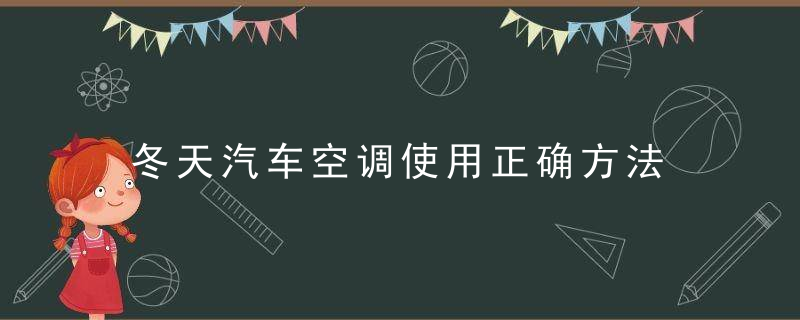初中英语语法名词篇(附习题和答案)

初中中考英语语法
名词篇,
语法总述,
词类、句子成分和构词法,
1、词类,
名词、形容词、代词、数词、冠词、动词、副词、介词、连词、感叹词。
1、名词(n.),
表示人、事物、地点或抽象概念的名称。如,boy, morning, ball, class, orange, clock,
合成名词,8-year-olds, groun-ups, passers-by, e-mail, 2、代词(pron.),
主要用来代替名词。如,who, she, you, it .
3、形容词(adj..),
表示人或事物的性质或特征。
如,good, right, white, orange, ugly, sweet, far,
合成形容词,8-year-old, hard-working,
4、数词(num.),
表示数量或事物的顺序。
基数词,one, two, three, hundred,
序数词,first, second, third,
pairs of, 量词,a piece of, two bottles of, three basket of, four bowls of, five cups of,six
5、动词(v.),
表示动作或状态。
系词,am, is,are,
半系词,look, sound, feel, get, become, keep, stay, taste, smell, turn,
实意动词,have, see , think, beat, walk,
助动词,辅助动词构成否定、疑问等语气?辅助东西构成时态语态等。如,
be,do,does,did,will,can,should,may,
6、副词(adv.),
修饰动词、形容词或其他副词,说明时间、地点、程度等。如,now, here, often, quietly, slowly, home, upstairs,
hard, very, really,
7、冠词(art..),
用在名词前,帮助说明名词。如,a, an, the.
8、介词(prep.),
表示它后面的名词或代词与其他句子成分的关系。
如in, on, at, from, above, under, behind, with, without, to,
短语介词,next to, in front of, at the age of, 9、连词(conj.),
用来连接词、短语或句子。如and, or, before, when, while, after, as soon as, if, unless,
until, because, so, though, but, even if, even though, as if,
10、感叹词(interj..):
表示喜、怒、哀、乐等感情。如,oh, well, hi, hello
2、句子成分,
主语、谓语、宾语、定语、状语、表语、宾语补足语。
1、主语是句子所要说的人或事物,回答是“谁”或者“什么”。通常用名词或代词担任。如,I’m Miss Green.(我是格林小姐)
1 / 16
1/16页
2、谓语动词说明主语的动作或状态,回答“做(什么)”。主要由动词担任。如,Jack cleans the room every
day. (杰克每天打扫房间)
3、表语在系动词之后,说明主语的身份或特征,回答是“什么”或者“怎么样”。通常由名词、代词或形容词担任。如,My name is Ping ping .(我的名字叫萍萍)
4、宾语表示及物动词的对象或结果,回答做的是“什么”。通常由名词或代词担任。如,He can spell the
word.(他能拼这个词)
有些及物动词带有两个宾语,一个指物,一个指人。指物的叫直接宾语,指人的叫间接宾语。间接宾语一般放在直接宾语的前面。如,He wrote me a letter . (他给我写了一封信)
有时可把介词to或for加在间接宾语前构成短语,放在直接宾语后面,来强调间接宾语。如,He wrote a letter
tome . (他给我写了一封信)
5、定语修饰名词或代词,通常由形容词、代词、数词等担任。如,
Shanghai is a big city .(上海是个大城市)
6、状语用来修饰动词、形容词、副词,通常由副词担任。如,He works hard .(他工作努力)
7、宾语补足语用来说明宾语怎么样或干什么,通常由形容词或动词充当。如,They usually keep their
classroom clean.(他们通常让教室保持清洁)/ He often helps me do my lessons.(他常常帮我做功课) / The teacher wanted me to learn French all by myself.(老师要我自学法语)
同位语通常紧跟在名词、代词后面,进一步说明它的情况。如,Where is your classmate Tom ?(你的同学汤姆在哪里?)
3、构词法,英语构词法主要有,合成法、派生法和转换法。
1、合成法,如,spaceship,headache,basketball,playground等等。
2、派生法,
(1)派生名词,?动词+er/or动词+ing动词+(t)ion形容词+ness其他,如,inventor, learner, swimming,
congratulation, kindness, carelessness, knowledge
(2)派生形容词,?名词+y名词+ful动词+ing/edfriendlydangerousChinese; JapaneseEnglishFrenchGerman国名+(i)an如,snowy, sunny, hopeful, beautiful, interesting, follwing, daily(每日的),nervous, delicious
(3)派生副词,?形容词+ly 其它,如,slowly, angrily, fullfully, goodwell, possiblepossibly等等。
3、转换法,
(1)形容词?动词,如,dry(干燥的)dry(弄干), clean(干净的)clean(打扫,弄干净),等等。
(2)动词?名词,如,look, walk, rest, work, study, swim, go, talk等等。
(3)名词?动词,如,hand(手)(传递),face(脸)(面对)等等。
(4)形容词?副词,如,earlyearly, fastfast等等。
(5)副词?连词,如,when(什么时候)(当……时候),等等。
(6)介词?副词,如,in(到……里)(在里面?在家),on(在…上)(进行,继续),等等。
名词篇,
名词的种类,英语名词可分专有名词和普通名词两大类,
专有名词 普通名词
国名,地名,人名, 可数名词 不可数名词
团体,机构名称 个体名词 集体名词 抽象名词 物质名词
1、专有名词是个别的人、地、物、团体、机构等的专用名称。
专有名词中实词的第一个字母要大写。如,Jilin, Tom, China, (1)零冠词?如Yale University,Beijing Railway Station,是由专有名词+普通名词组成?往往为并列关系。 (2)定冠词?如the United Statesthe Great Wall,由形容词+普通名词组成。
(3)姓氏名如果采用复数形式,则表示该姓氏一家人(复数含义),如,the Greens( 格林一家人)。
2 / 16
2/16页
2、普通名词是许多人或事物的共有名称。
普通名词又可进一步分为四类
1) 个体名称: 表示单个的人和事物。
house 马 car 汽车 room 房间 apple 苹果 fun 风扇 picture 照片
2) 集体名称: 表示一群人或一些事物的名称。
people 人们 family 家庭 army 军队 government group 集团
3) 物质名词:表示物质或不具备确定形状和大小的个体的物质。
fire 火 steel 钢 air 空气 water 水 milk 牛奶
4)抽象名词:表示动作,状态,品质或其他抽象概念。
labour 劳动 health 健康 life 生活 friendship友情 patience耐力
3.普通名词又分为可数名词和不可数名词。
可数名词是可以用简单的数词进行计数的名词,如, box, child, orange
不可数名词是不可以用简单的数词进行计数的名词。如,water, news, oil, population, information .
4、英语可数名词的单复数,英语可数名词有单数和复数两种形式。
1. 规则名词的复数形式,
规则 例词
1 一般情况在词尾加-s map-maps, sea-seas, girl-girls, day-days
class-classes, box-boxes, watch-watches, dishdishes, 2 以s, x, ch, sh结尾的名词后加-es benchbenches, glasses, dresses, wishes, faxes
leaf-leaves, thief-thieves, knife-knives,
loaf-loaves,wife-wives, shelfshelves, wolfwolves, 变-f和-fe为v再加-es 以-f或-fe结尾3 lifelives, half-halves, leaf-leaves, yourself-yourselves 的词 belief-beliefs, chief-chiefs, proof-proofs, roof-roofs, 加-s gulf-gulfs,
party-parties, family-families, story-stories, city-cities, 4 以辅音字母加y结尾的名词?变y为i加-es baby-babies, duty-duties, comedy-comedies,
documentary-documentaries
以元音字母加y结尾的名词?或专有名词以toy-toys, boy-boys, day-days, ray-rays, Henry-Henrys, 5 toy-toys, key-keys, ways y结尾的?加-s
hero-heroes, Negro-Negroes, potato-potatoes, 一般加-es tomato-tomatoes 以辅音字母加piano-pianos, photo-photos, auto-autos, kilo-kilos, 6 不少外来词加-s -o结尾的名词 solo-solos
两者皆可 zero-zeros/zeroes, volcano-volcanoes/ volcanos 7 以元音字母加-o结尾的名词加-s radio-radios, bamboo-bamboos, zoo-zoos 8 以-th结尾的名词加-s truth-truths, mouth-mouths, month-months, path-paths,
单个字母的复数可以有两种形式直接加s9 如,Is (I’s), Ks (K’s)。如,IDs, VCDs, SARs 或’s。但如是缩略词则只加s。
2. 不规则名词复数,
英语里有些名词的复数形式是不规则的?现归纳如下,
规则 例词
man-men, woman-women,foot-feet, goose-geese,
mouse-mice, manmen, womanwomen, sheep1 改变名词中的元音字母或其他形式
sheep,toothteeth, childchildren, goosegeese 2 单复数相同 sheep, deer, series, means, works, fish, species li, yuan, jin,
ashes, trousers, clothes, thanks, goods, glasses, compasses, 3 只有复数形式 contents
4 一些集体名词总是用作复数 cattle, staff
部分集体名词既可以作单数?表整体,也audience, class, family, crowd, couple, group, committee, 5 government, population, crew, team, public, enemy, party, 可以作复数?表其中的人或者成员,
3 / 16
3/16页
police警察局?警察, class班?同学, family家?家庭成员
customs(海关), forces(军队), times(时代), spirits(情绪),
drinks(饮料), sands(沙滩), papers(文件报纸), manners(礼6 复数形式表示特别含义 貌),looks(外表), brains(头脑智力), greens(青菜), ruins(废
墟)
Americans, Australians, Germans, Greeks, Swedes, 加-s Europeans
单复数同形 Swiss, Portuguese, Chinese, Japanese, sheep, deer, fish, 7 表示“某国人”
以-man或-woman结尾Englishmen, Frenchwomen 的改为-men,-women
将主体名词变为复数 sons-in-law, lookers-on, passers-by, story-tellers, boy friends 8 合成名词 无主体名词时将最后一grown-ups, housewives, stopwatches 部分变为复数
把主要名词变成复数, a boy student- some boy studentsan apple tree-some apple 做定语的名词一把用单trees, a shoe factory- some shoe factories, an eight-year-old boy, 数 名词作定语 9 名词作定语将两部分都a woman singer-women singers, a man teacher-men teachers,
变为复数
名词作定语? a sports bag-two sports bag, a clothes store-two clothes stores
scissors 剪刀 goods 货物 trousers 裤子glasses 玻璃杯常以复数形式出现 10 people,pants, shorts, shoes, glasses, gloves, clothes, socks
fish鱼 fishes鱼的种类, paper纸 papers报纸?卷子?论文,
work工作 works作品?工厂, glass玻璃 glasses玻璃杯?11 单复数意义不同 眼镜, orange桔子水 oranges橙子, light光线 lights灯,
people人 peoples民族, time时间 times时代, 次数,
chicken 鸡肉 chickens 小鸡
5、名词所有格,
名词在句中表示所属关系的语法形式叫做名词所有格?相当于物主代词,在句中作定语、宾语或主语。所有格分三种,一是名词词尾加’s构成?二是由介词of加名词构成。前者多表示有生命的东西?后者多表示无生命的东西。三是双重所有格。
1. ’s所有格的构成,
the boy’s father, Jack’s book, her son-in-law’s photo,Jim's bed , the 单数名词在末尾加’s man's wife, the fox's tail
一般在末尾加’ the teachers’ room, the twins’ mother, Childern’s Day, 复数名词 不规则复数名词后加’s the children’s toys, women’s rights,
Dickens’ novels, Charles’s job, the Smiths’ house, the students' 以s结尾的人名所有格加’s或者’ books, Teachers' Day, my boss' office, a girls' dormitory 表示各自的所有关系时,各名词末尾均须Japan’s and America’s problems, Jane’s and Mary’s bikes 加’s
Japan and America’s problems, Jane and Mary’s father, Lucy and 表示共有的所有关系时在最后一词末加’s Lily’s bedroom
表示)某人家))店铺)?所有格后名词the barber’s, the tailor’s, my uncle’smy aunt’s(我阿姨家), the 省略 doctor’s(诊所)
2. ’s所有格的用法,
有些表示时间、距离、度量衡、价值、自然现象、国家、城镇等无生命东西的名词?也可以加's构成所有格。
4 / 16
4/16页
表示时间 today’s newspaper, five weeks’ holiday
表示自然现象 the earth’s atmosphere, the tree’s branches : 表示国家城市等地方的名词 the country’s plan, the world’s population, China’s industry 表示工作群体 the ship’s crew, majority’s view, the team’s victory
表示度量衡及价值 a mile’s journey, five dollars’ worth of apples
与人类活动有特殊关系的名词 2 the life’s time, the play’s plot
某些固定词组 a bird’s eye view, a stone’s throw, at one’s wit’s end(不知所措) 3
名词所有格所修饰的词?如果前面已经提到过?往往可以省略?以免重复。
Whose pen is this? It's Tom's.这是谁的钢笔?是汤姆的。
The bike is not mine, but Tom’s.这辆自行车不是我的?是Tom的。
3. of所有格的用法,
用于无生命的东西,the legs of the chair, the cover of the book, a map of the world , the story of a hero , the
windows of the room , the title of the film
用于有生命的东西?尤其是有较长定语时,the classrooms of the first-year students
某些of所有格和‘s所有格可以互换。
the son of a poor peasanta poor peasant‘s son一个贫农的儿子
但有时含义却不相同?请比较下面的例子,
an old woman's story(一个老妇人讲自己的身世)
the story of an old woman(别人讲一个老妇人的身世)
4. 双重所有格
在意义上与'one of...'相似,
of+名词所有格/名词性物主a friend of my father’s(我父亲的一位朋友) =one of my father’s friends, 1 代词” a friend ofmine(我的一位朋友)=one of my friends
此外?不定冠词、数词、某些不定代词(some, any, many, no, few等)以及which等限定词?采用of所有格或双重所有格形式。例如,
most of the students学生中的大多数
three of them他们中的三个人
I like reading some books of his.我喜欢读他的一些书。
Which book of Qiong Yao’s do you like best?你最喜欢琼瑶的哪一本书?
5. 's所有格、of所有格和双重所有格三者之间的细微区别
请仔细比较下面三句话,
1.She is Mary's brother's friend.
2.She is a friend of Mary's brother.
3.She is a friend of Mary's brother's.
1句用的是's所有格?侧重说明她和Mary的哥哥是朋友关系?突出friend一词。
2句用的是of所有格?侧重说明她和Mary的哥哥是朋友关系?强调突出了Mary's brother。
3句用的是双重所有格?侧重说明Mary哥哥的朋友不止是一个?她只是其中的一个。
5 / 16
5/16页



















